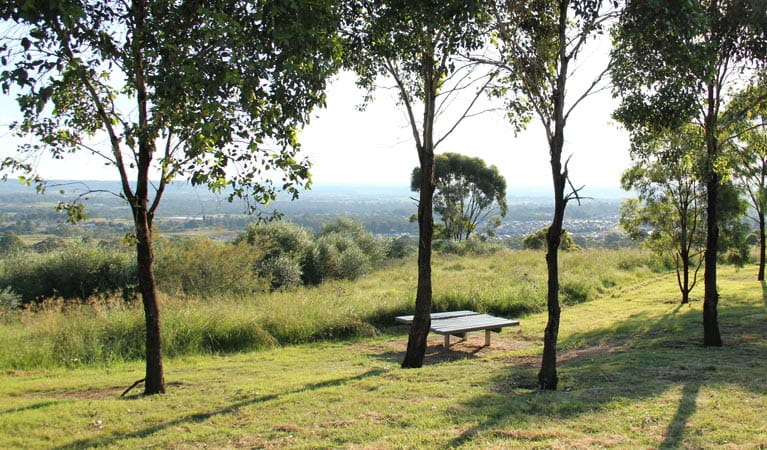Turkeys Nest picnic area and lookout
William Howe Regional Park
Overview
Take the short walk to the dog-friendly Turkeys Nest picnic area in William Howe Regional Park. Enjoy great views to the Blue Mountains from the lookout.
- Type
- Lookouts
You’ll find Turkeys Nest lookout at the highest point of the Loop trail in William Howe Regional Park. It’s a short and easy walk to the lookout, so a good one for children.
From Turkeys Nest, take in the far-reaching views of undulating farmland of the Razorback Mountains, extending to the escarpment of the Blue Mountains in the distance.
Just a short walk down the hill you’ll find the picnic area, which also provides extensive views as a delightful backdrop to your meal. Turkeys Nest is dog-friendly so bring your four-legged friends along for a picnic too.
Map

Map legend

Local alerts
For the latest updates on fires, closures and other alerts in this area, see https://www.nationalparks.nsw.gov.au/things-to-do/lookouts/turkeys-nest-picnic-area-and-lookout/local-alerts
General enquiries
- National Parks Contact Centre
- 7am to 7pm daily
- 1300 072 757 (13000 PARKS) for the cost of a local call within Australia excluding mobiles
- parks.info@environment.nsw.gov.au
Park info
- in William Howe Regional Park in the Sydney and surrounds region
William Howe Regional Park is always open but may have to close at times due to poor weather or fire danger.
Visitor info
All the practical information you need to know about the Turkeys Nest picnic area and lookout.
Getting there and parking
Get driving directions
On entering William Howe Regional Park at Narellan Vale, head to the carpark on Mary Howe Place. Follow the Loop trail to Turkey's Nest picnic area and lookout.
Road quality
- Sealed roads
Vehicle access
- 2WD vehicles
Weather restrictions
- All weather
Parking
Street parking is available
Best times to visit
William Howe Regional Park is a great place to visit all year round. Head to the park for an early morning jog in spring, a weekend picnic in the winter sun or an evening stroll during summer.
Weather, temperature and rainfall
Summer temperature
Average
18°C and 28°C
Highest recorded
45°C
Winter temperature
Average
3°C and 19°C
Lowest recorded
–6°C
Rainfall
Wettest month
February
Driest month
July
The area’s highest recorded rainfall in one day
156mm
Facilities
- Please take your rubbish with you when you leave the lookout
- Toilet facilities and water are not available in the park
Picnic tables
Maps and downloads
Permitted
Pets
You can walk your dog on-lead at this location. See other regional parks in NSW that have dog walking areas.
Dogs are permitted in this part of the park – you will need to keep them on a leash at all times and remember to pick up after them.
Prohibited
Learn more
Turkeys Nest picnic area and lookout is in William Howe Regional Park. Here are just some of the reasons why this park is special:
Ancient landscapes
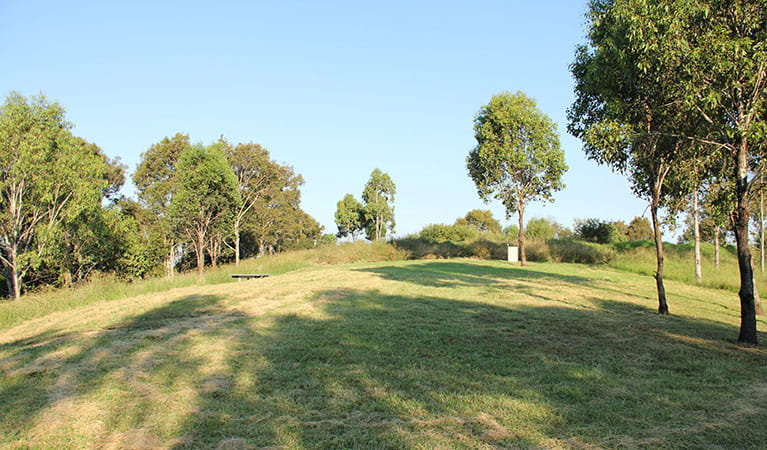
William Howe Regional Park is within the traditional lands of the Sweet Water Dharawal Aboriginal People. The park's prominent and elevated setting was important for communication, camping and spotting animals. The park's landscapes features Aboriginal storylines and continues to be an important place for Aboriginal people today.
Extend your backyard
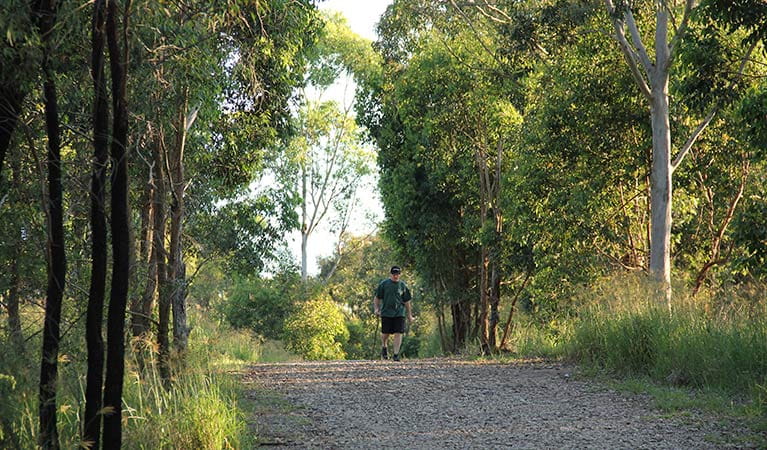
Situated at the end of several suburban streets, you can enjoy William Howe Regional Park any time you feel like a good dose of fresh air. Walk after work, take the kids for a ramble to burn off some energy, head out with your dogs or find a quiet spot to take time out from a busy day - you'll feel all the better for it.
Nature in the suburbs
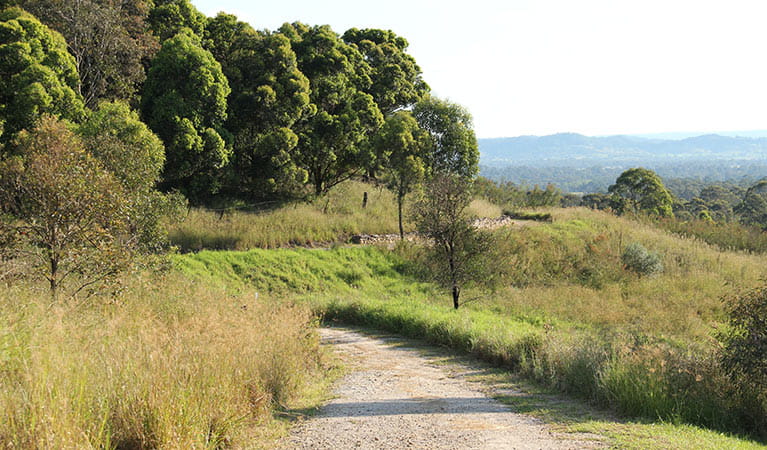
Whether you're heading out for a run, a walk with the dog or a weekend picnic with the kids, it's great to have a local park where you can get back in touch with nature. Listen to the birds, check out the views and enjoy the feeling of space that comes with getting out and about in nature.
Plants and animals protected in this park
Animals
-
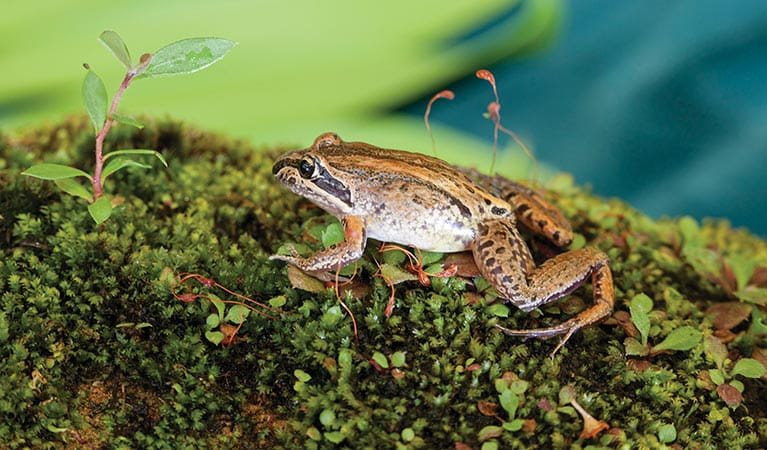
Brown-striped frog (Lymnastes peronii)
One of the most common frogs found in Australia, the ground-dwelling brown-striped frog lives in ponds, dams and swamps along the east coast. Also known as the striped marsh frog, this amphibian grows to 6.5cm across and has a distinctive ‘tok’ call that can be heard all year round.
-
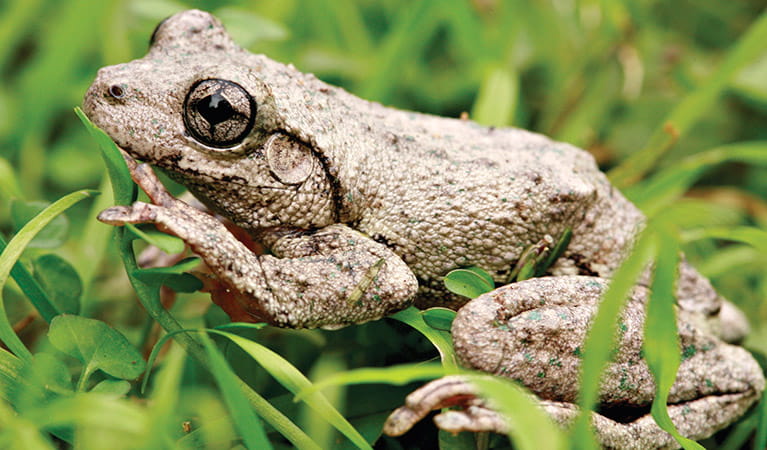
Peron's tree frog (Litoria peroni)
Peron’s tree frog is found right across NSW. These tree-climbing and ground-dwelling Australian animals can quickly change colour, ranging from pale green-grey by day, to a reddish brown with emerald green flecks at night. The male frog has a drill-like call, which has been described as a 'maniacal cackle’.
-
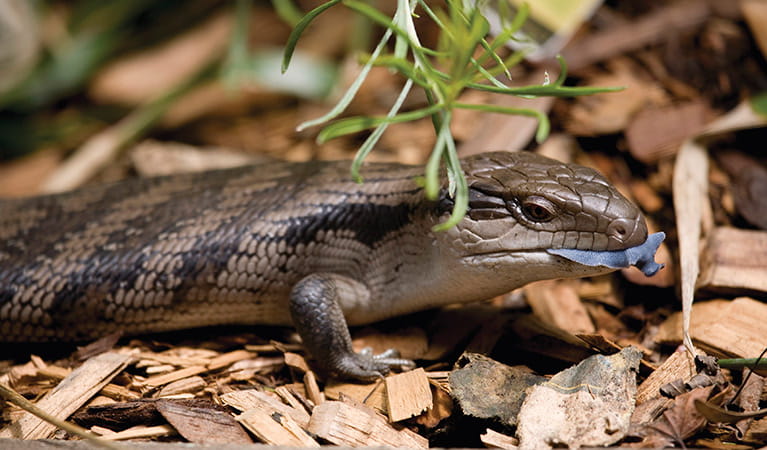
Eastern blue-tongue lizard (Tiliqua scinciodes)
The eastern blue-tongue lizard, one of the largest skinks in Australia, is found throughout most of NSW. When threatened, the eastern blue-tongue lizard displays its blue tongue in a wide-mouthed intimidating show. Not an agile animal, they feed on slow-moving beetles and snails.
-
Cumberland Plain land snail (Meridolum corneovirens)
The endangered Cumberland Plain land snail is only found on the Cumberland Plain, west of Sydney. During drought it digs deep into the soil to escape harsh conditions. Its brown shell is thin and fragile.

